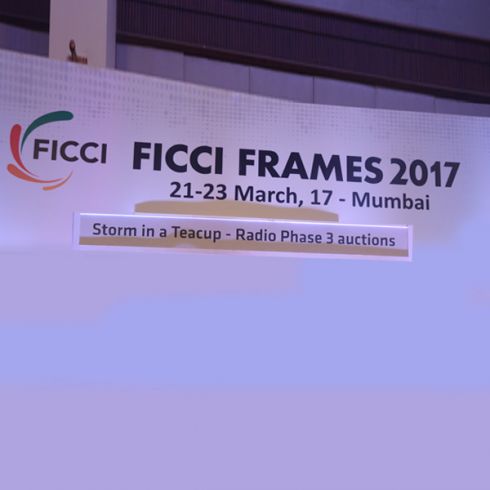

MUMBAI: Radio did find space at FICCI 2017. The special radio session was titled, 'Storm in a Teacup – Radio Phase 3 Auctions'. As the name suggests the discussion amongst the esteemed panellist – Tarun Katial, CEO, Reliance Broadcast Limited (Big FM), Abraham Thomas, CEO, Music Broadcast Pvt Ltd (Radio City), Gautam Radia, Founder and CEO at Millennium Broadcast Pvt Ltd (Hit FM), Harrish M Bhatia, CEO, DB Corp. (My FM) and Prashant Panday, CEO, Entertainment Network (India) Ltd (Radio Mirchi) – was meant to revolve around Phase III, but they did touch on some important aspects. One of these important issues was the exceeding radio advertisement time. Yes, we all thought there was an urgent need to put a cap on those never ending radio ads and now, the men running the business share similar thoughts.
There is no denying the fact that the radio industry has an upper hand in the ad world with a consumer being left with minimum option of skipping the ad on radio, unlike other mediums of advertising. Elaborating on this point Reliance Broadcast Entertainment Limited CEO Tarun Katial said, “Today is the age of active ad awareness. The actual people who worry according to me are the television people. Not a single person is watching ads on television; all they do is, swap. According to me, only two mediums are such where avoiding advertisements are not possible, one is auto phones and other is FM Radio. The audience accepts advertisements at a basic level just to know what is happening in the world. I think they have understood well that there is no running away from an advertisement.”
The audience has definitely learned that there is no running from radio jingles, but they have also reached a saturation level and the industry too has sensed it. Understanding the gravity of the matter, Entertainment Network India Limited CEO Prashant Panday stated, “From last six months I have been on field studying radio ads and no matter where we have our stations, we have kept a 10 minutes cap. Mirchi had 22 minutes ad during Diwali then we reduced it to 18 minutes.”
Shorter advertising time obviously means lesser revenue, but Pandey is, in for it. He does not mind exploring other avenues to balance the revenue part of the business. “Even if we are losing our revenue we don’t mind, we have other ways to build that revenue. But now we will have 15 minutes ad cap next year and 12 minutes, year after. We are happy to do this and I believe there are other like-minded broadcasters who will agree to do this.”
Studies say, in India radio advertising revenue is around four to five per cent of the total share – which is lower than many developed countries. Globally the share of radio in ad spends is between seven to eight per cent.
The ads have also played a major role in the growth of radio. Earlier only local brands approached radio, now national brands are showing interest. It started with TV jingles being run on radio and now the creators are actually designing ads for radio. This is a result of growing phase of the radio industry.